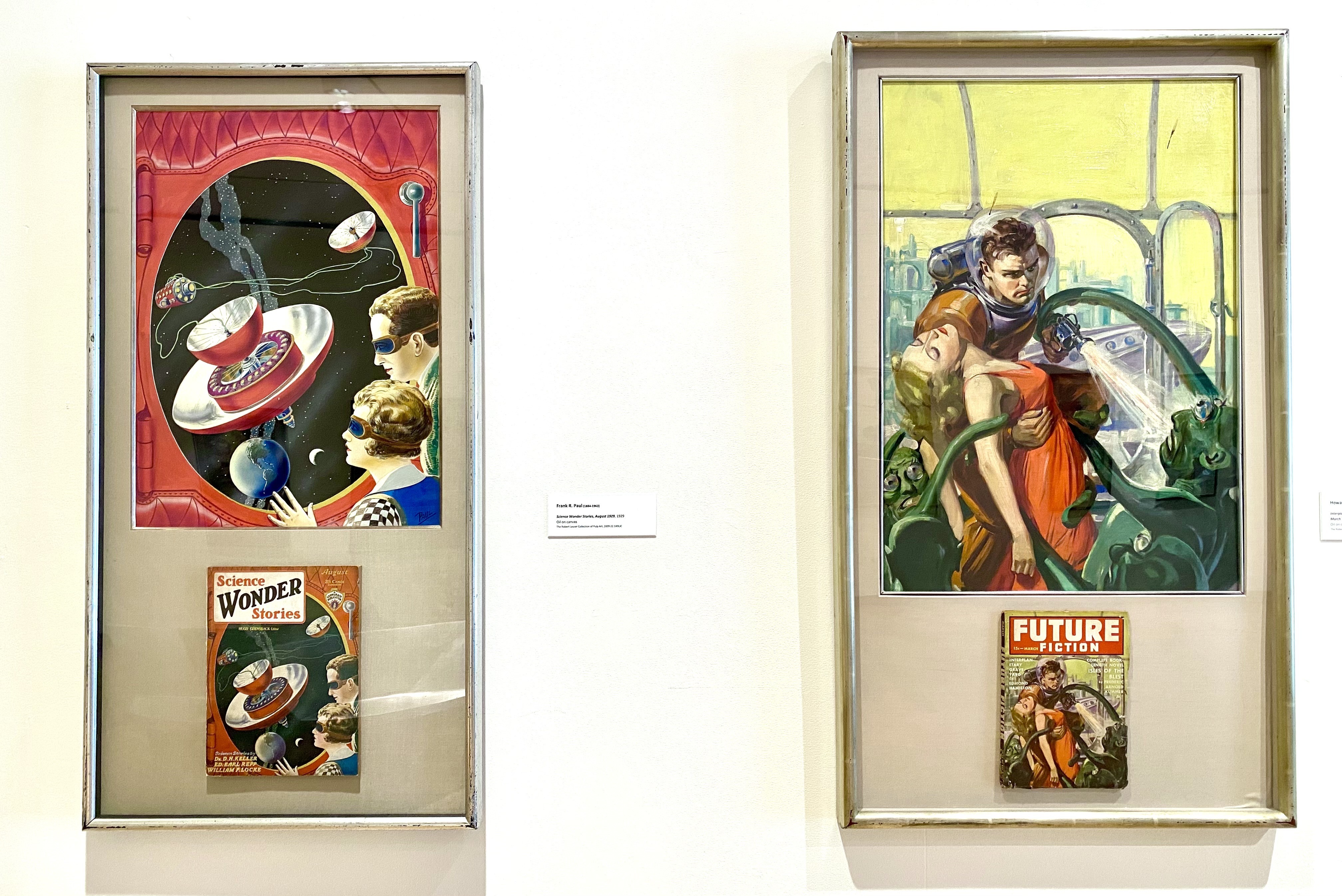ABOUT THE EXHIBITION
Cowboys, Detectives, and Daredevils: Pulp Art at the NBMAA
From the Great Depression through the era of World War II, Americans turned to inexpensive novels referred to as “pulp-fiction” as a form of entertainment and a way to escape their woes. These gripping stories, conceived before the age of television by writers including Dashiell Hammett, Raymond Chandler, and Ray Bradbury, were suffused with adventure and mystery. Often produced as series, pulp-fiction gave rise to iconic characters, such as Buck Rogers, Doc Savage, and The Phantom Detective, who many consider the forefathers of today’s comic book superheroes.
Printed on low-grade wood-pulp paper, to which the term “pulp” refers, these books featured sensational, eye-catching illustrations. Buyers were immediately attracted to their cover art: the situations depicted were fraught with drama, their narratives simple and direct, and their colors vibrant. Although pulp-fiction publications were small, the original oil paintings that were created for reproduction as cover images often measured over 2 x 3 feet. Over the decades, almost all the original artwork commissioned by publishing houses from the leading illustrators of the day, including N. C. Wyeth, Frank R. Paul, and George Rozen, has been lost, as the paintings were only intended for one-time use and were then invariably discarded.
In the 1970s, collector Robert Lesser became one of the first people to recognize the relevance of such covers, not only aesthetically, but also as an important reflection of our material culture. He began to acquire what few examples he could find across the U.S., uniting the original texts with the illustrations produced for them. In 2013, he gifted his extraordinary collection of 200 pulp art illustrations to the New Britain Museum of American Art, which is recognized as one of the first American museums to collect examples by prominent 19th- and 20th-century American illustrators. In 2020, following Lesser’s passing, the Museum received another 11 pulp paintings from his estate. Today, the Robert Lesser Collection represents the greatest assemblage of pulp art in this country, preserving the history of this exclusively American art form.
Cowboys, Detectives, and Dare-Devils: Pulp Art at the New Britain Museum of American Art presents a selection of 17 of the finest and most compelling examples of pulp art from various genres, including crime & detective, western, science fiction, adventure, and aviation stories. The imagery featured is a testament to the compelling narrative of the stories, as well as the imaginations of the artists, who transformed words into fantastical images.
The Robert Lesser Collection of Pulp Art
